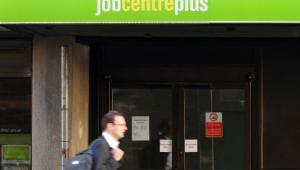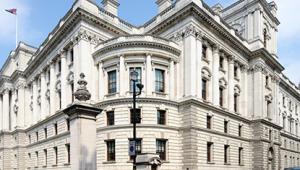Data from the Office for National Statistics, released yesterday, showed that in the last three months of 2017 there were 1.47 million unemployed people - 46,000 more than the previous quarter.
Consequently, unemployment rose by one percentage point from the previous quarter, although the rate of unemployment remains relatively low at 4.4%.
These figures signify a change in the trend of unemployment falling since June 2015.
UK GDP was 0.1 percentage point down from the preliminary estimate, the ONS also said yesterday.
This was “in part reflecting a small downward revision to the estimated output of the production industries”.
GDP did increase by 0.4% between quarter 3 and quarter 4 last year, the data showed, and 1.7% between 2016 and 2017.
But the growth between 2016 and last year was a downward revision of 0.1 percentage points from the preliminary estimate and slightly lower than the 1.9% growth seen between 2015 and 2016, the ONS pointed out.
The unemployment figures showed pay growth improved with average weekly earnings reaching 2.5% higher in October to December 2017, including and excluding bonuses, compared with the same period the year before.
Stephen Clarke, senior economic analyst at think-tank the Resolution Foundation said: “It’s early days but the evidence points to a plateauing in employment growth and pay pressure building.
“Hopefully, this means Britain is finally in line for a pay rise after nearly a year of stagnant wages.”
The total number of people in work came in at 32.15 million in the last quarter of last year, which is 88,000 more than the previous quarter and 321,000 more than October to December 2016.
Baroness Susan Kramer, Liberal Democrat Treasury spokesperson said: “This rise in unemployment is small, but it is a warning sign.” The UK economic growth is fragile and is being impacted by Brexit uncertainty, she added.
Further analysis from the ONS revealed that public sector net borrowing decreased by 7.2bn to £37.7bn in the current financial year to date.
These figures showed the lowest year-to-date net borrowing since January 2008 - the year of the financial crisis.
Thomas Pope, a research economist at the Institute for Fiscal Studies, said that the chancellor will be “pleased” with the most recent figures, which enables him to lower the borrowing forecast in this year’s Spring Statement next month.
Pope added: “An upwards revision to estimated receipts of corporation tax, PAYE and National Insurance over the first nine months of this financial year have contributed to borrowing being over £2bn lower than thought a month ago.”
Chief secretary to the Treasury, Elizabeth Truss said: “These are strong borrowing figures, which is proof that we are fixing out nation’s finances and reducing the burden on future generations.
“Our balanced approach means we have committed billions of extra funding to the NHS and cut taxes for working people and companies across the UK, while reducing the deficit and building an economy for the future.”
Separate ONS figures also revealed that output per hour, the main measure of labour productivity, increased by 0.8% in the final quarter of 2017.
The statistics signify a second consecutive quarter of growth in productivity in 2017, and the second-highest rate of growth since the second quarter of 2011.











